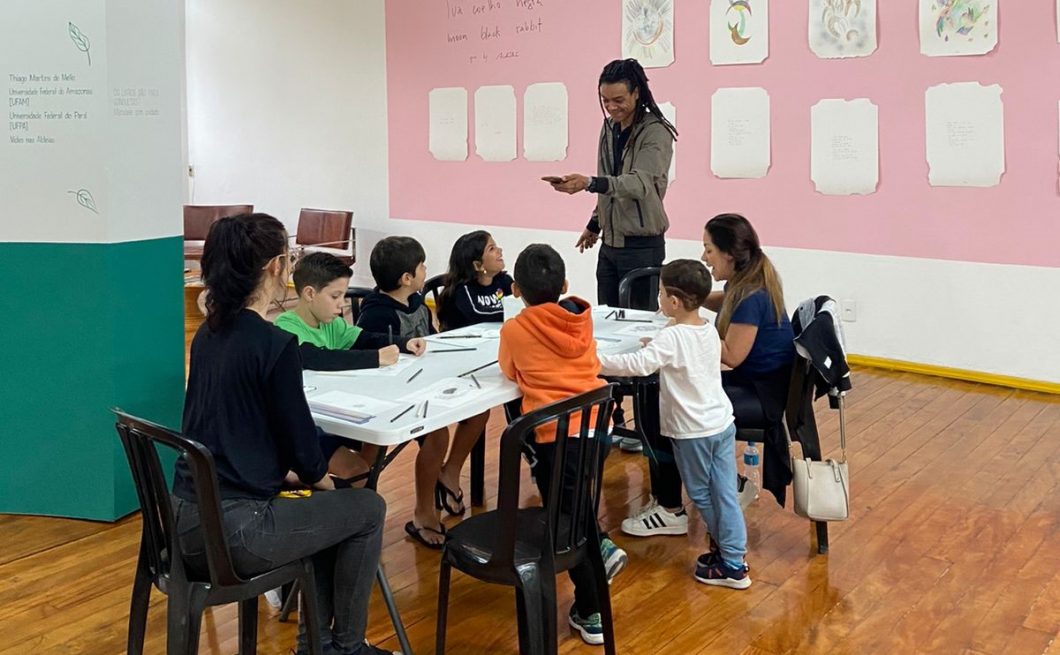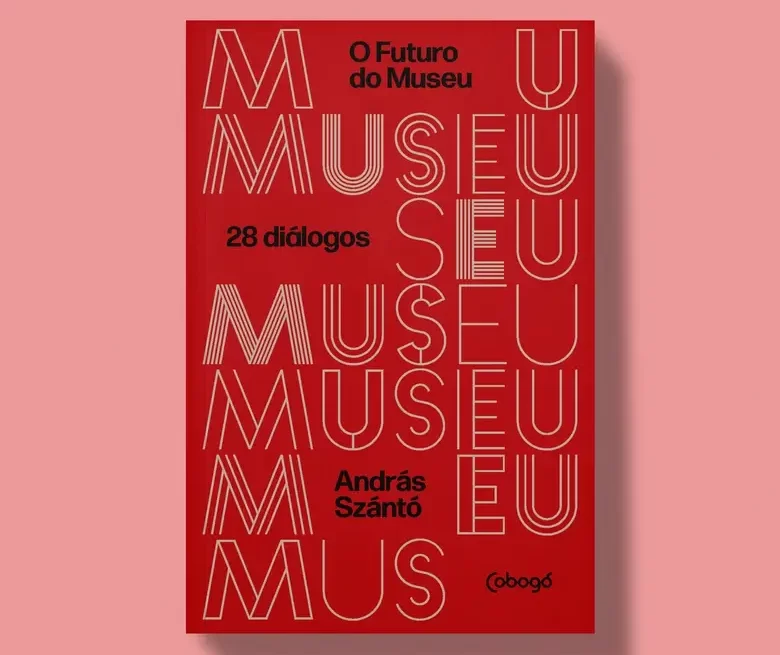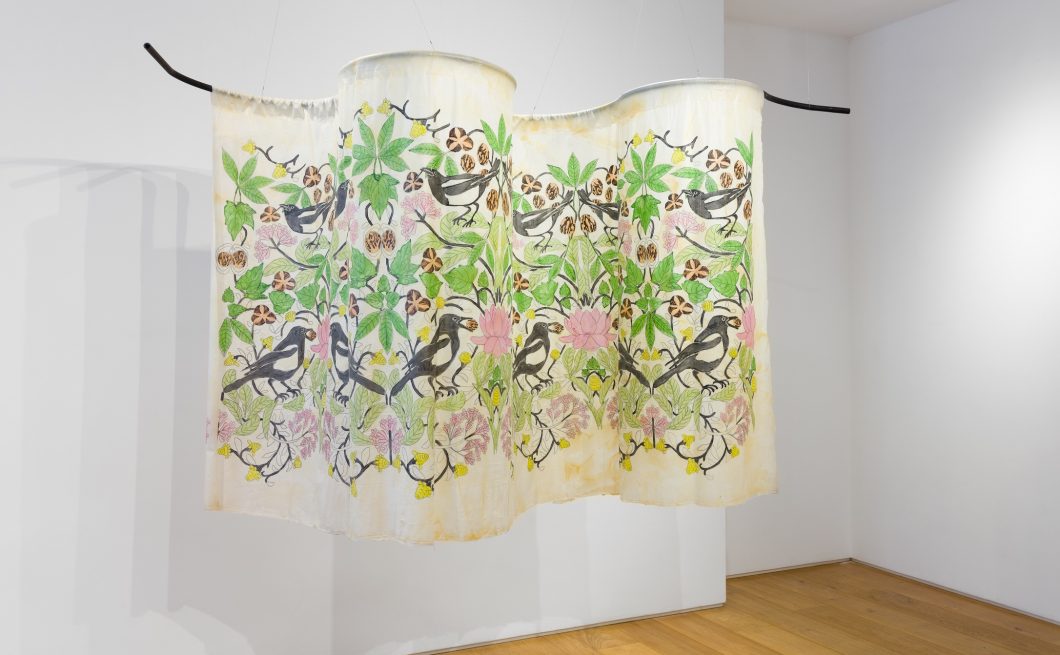Inclusartiz Cultural Center presents a project with exhibitions by Dalton Paula and Márcia Falcão
Opening event will be held on March 23, featuring the launch of the book Dalton Paula: O sequestrador de almas, published by Editora Cobogó, and a round table with the artists
This Thursday, March 23, Inclusartiz Cultural Center will present to the public the project Intersections – Dialogues Between Contemporary Art and Literature. Under the curatorship of Victor Gorgulho, Chief Curator at the institution, the initiative presents in this first edition individual exhibitions by Dalton Paula (Brasília, 1982) and Márcia Falcão (Rio de Janeiro, 1985), visual artists whose productions dialogue not only with the literary field, but also talk to each other.
>> Read the curatorial texts here.
In the opening day, at 7 pm, the book Dalton Paula: O sequestrador de almas (The Kidnapper of Souls), published by Editora Cobogó, will also be launched. The publication gathers works by the artist accompanied by texts by anthropologist Lilia Moritz Schwarcz about his production and work processes. To mark the launch in Rio de Janeiro, a round table will be held by Dalton Paula and Márcia Falcão, which will be mediated by curator Keyna Eleison.
The project Intersections – Dialogues Between Contemporary Art and Literature reinforces the interdisciplinary vocation that runs through the various activities of Instituto Inclusartiz. Since its official opening, last year, the cultural center has been developing a multidisciplinary program of a hybrid nature, uniting its traditional Artist Residency and Research Program – in progress since 2014 – with an exhibition program that praises the tentacular nature of the institute’s initiatives.
“From the mansion to Praça da Harmonia, from its headquarters in Rio de Janeiro to many other cities around the world, Inclusartiz continues to carry, in its essence, a latent desire to promote culture, not only on the contemporary art circuit but, far beyond, aiming to reach territories of friction and to bring rapprochement among visual arts and other languages, such as theater, music, dance and, in this project, literature,” says Victor Gorgulho.
Two individual exhibitions inaugurate the Intersections: The Opening of the Eyes, by Dalton Paula, in the first room of the exhibition space on the first floor, and Father Against Mother, by Márcia Falcão, occupying the next room, so that the autonomy of the exhibitions and works of each artist is respected, even though there are countless points of intersection and connection between their productions.
The Opening of the Eyes shows some of Dalton Paula’s first artistic experiments, at a time in his career when photo-performance and the use of video deeply crossed his practice, with performative acts either for a static camera or for audiovisual purposes. Among the works on display are some of the artist’s first incursions into these fields, still far from producing paintings, for example – whether on canvas or on supports such as books or bowls, dishes and clay vases commonly used in religious ceremonies of candomblé, in addition to its everyday function, to serve food.

The photograph “A Cor de Pele A” (2012), by Dalton Paula, will be on display at the exhibition “The opening of the eyes” / Photo: courtesy of the artist
In these works, already distant from the artist’s current production, we can witness the peculiar moment in which Dalton portrayed his own body – or the black body, in general, with their faces and eyes usually blindfolded, closed or even covered by some object or apparatus. A second group of works – three paintings from his famous series “Brazilian Portraits,” in which he paints the faces of historic black leaders in Brazil – reveal the opening of the eyes of those characters, whose memories were erased by traditional historiography and are, today, rewritten in the artist’s delicate and powerful work.
In the other room, the complete set of paintings by artist Márcia Falcão is presented, especially produced for the new edition of the short story “Father Against Mother,” [Pai contra mãe], by Machado de Assis, recently republished by Editora Cobogó. Written in 1906, the work, one of the author’s most brilliant tales, makes a stark portrait of Brazilian society at the time. By introducing the character Cândido Neves, who “gave in to poverty when he acquired the trade of catching runaway slaves,” Machado de Assis crudely exposes the misery and violence experienced by blacks and the poor in Brazil. For journalist Tiago Rogero, who signs a text in the book flap, Márcia Falcão’s paintings highlight the “assertiveness against barbarism” of the original text and “brighten up this edition.” Its figurative and expressive style, loaded with a combative look at social and gender inequalities, punctuates the reading with intense images that reinforce the connection between the story and contemporaneity. After all, Machado exposes some violences that persist into the 21st century.

Painting “Balança da fome” (2022), by Márcia Falcão, is part of the exhibition “Father Against Mother” / Photo: disclosure Fortes D’Aloia & Gabriel
ABOUT THE ARTISTS
Dalton Paula
Dalton Paula was born in Brasília, in 1982. He lives and works in Goiânia. In his artistic practice, he employs painting, performance and installations and, through these different languages, weaves relationships between image and power. In his signage repertoire, the central figure is the black body in diaspora, its rites and rituals. His production includes paintings on large and small scale on different supports, as well as his continuous interest in portraits, which constitute a proposal to revise the official historiography. The portrayed people are historical figures linked to the African diaspora, and many had their images and performances erased. In the installations, Dalton develops this line of investigation about the Black Atlantic and its rich symbolic language.
Paula holds a BA in Visual Arts from the Federal University of Goiás (UFG) and his work is part of important collections, such as the Museum of Modern Art (MoMA), in New York; the Pinacoteca of the State of São Paulo; and the Museum of Art of São Paulo (MASP). His work was exhibited at the 32nd Biennial of São Paulo (2016), curated by Jochen Volz, and at the New Museum Triennale (New York, 2018), curated by Gary Carrion-Murayari and Alex Gartenfeld, in addition to appearing among other collective exhibitions. He presented in New York the solo show Dalton Paula: A Kidnapper of Souls (2020) at the Alexander and Bonin gallery. Dalton inaugurated the exhibition program at Sé gallery with the exhibition and a serene and imperceptible earthquake devastated the city… (2014), and held the individual exhibitions Amansa-Senhor (2015) and Dalton Paula: Entre a Prosa e a História (2019). He is represented by Sé gallery, in São Paulo, and Alexander and Bonin, in New York.
Marcia Falcão
Márcia Falcão was born in Rio de Janeiro in 1985, raised in the neighborhood of Irajá, and today she lives and works in the suburbs of Rio de Janeiro. Based on her own experience, the artist’s figurative paintings show expressive representations of the female body, underlining the complexity of the social context in which it is inserted, crossed by a dubiously beautiful and violent landscape. The feminine, motherhood, beauty standards and gender violence are recurring themes that permeate her canvases, marked by gesture and physicality. In 2022, the artist presented her first individual exhibition in São Paulo, at Fortes D’Aloia & Gabriel, an offshoot of the show presented at Carpintaria, in Rio de Janeiro, in 2021. Among her main group exhibitions, the following stand out: Parábola do Progresso (2022), Sesc Pompeia, São Paulo; MAR + Enciclopédia Negra (2022), Museu de Arte do Rio (MAR), Rio de Janeiro; Crônicas Cariocas (2021), Museu de Arte do Rio (MAR), Rio de Janeiro; Engraved into the Body (2021), Tanya Bonakdar Gallery, New York, among others.
ABOUT THE BOOK ‘DALTON PAULA: THE KIDNAPPER OF SOULS’
Dalton Paula: O Sequestrador de Almas (The Kidnapper of Souls) (Editora Cobogó) brings together works by the artist accompanied by texts from anthropologist Lilia Moritz Schwarcz about his production and work processes. From reading and dialoguing with the history of the African diaspora in the formation of Brazil, the book presents the extensive research – travels, conversations, photographs, collages, diaries – for the elaboration of paintings, drawings, installations, performances, videos and photographs by Dalton Paula, which have memory, past biographies and ancestral knowledge as their central elements.
Dalton Paula’s subjective, affective and creative universe makes his art a dialogue with the history of black people in Brazil. His portraits put black characters under the spotlight, mostly made invisible by colonial narratives. The set of paintings shows how the black population was never passive in the face of the violence to which it was submitted in the country: many of those portrayed are historical figures of the resistance against the enslavement of blacks and the fight for freedom.
When he recreates the image of names like writers Machado de Assis and Lima Barreto, Dalton Paula reverses the logic of colonial portraits, which tend to “whiten” black male and female thinkers in the Brazilian national canon. Visual and social stereotypes that marked Afro-descendant populations in Brazil and abroad are purposefully highlighted. By transforming these physical features into reasons for pride, his painting imprints dignified and imposing portraits with an authorial and respectful mark.
In some works, however, black people are not represented in the portraits, but as a large absence expressed by silence and emptiness. “If the black body carries in it the traumas of its experience, this artist’s visual narrative is healing by resuming the violence of the past in the logic of contemporaneity, or even the weight of slavery and the language of inequality, with an art that celebrates and praises black subjectivities. But Dalton’s art does more, it frees what is a “white overdetermination”; the denial of black representation, with the construction of the experience and imaginative space of these populations in which it is included. Therefore, his work is respectful and affective. With ‘gratitude’, as Dalton Paula always likes to say,” says Lilia Schwarcz about the artist.
The result “is a gallery of ghosts of intimacy that have never been more alive. A plunge in the time of the ancestors, their wanderings and wisdom, which remained as an uncomfortable ‘present absence’ in the objects that come to life in the endless space that is the territory of relationships and memory itself,” describes the author.
ABOUT THE BOOK ‘FATHER AGAINST MOTHER’
One of Machado de Assis’ most brilliant texts, Pai Contra Mãe, from 1906, paints a stark portrait of Brazilian society at the time. By introducing the character Cândido Neves, who “gave in to poverty when he acquired the trade of catching runaway slaves,” the author crudely exposes the misery and violence experienced by blacks and the poor in Brazil. This edition by Editora Cobogó, illustrated by a series of paintings especially created by artist Márcia Falcão, features an unprecedented critical essay by professor and researcher José Fernando Peixoto de Azevedo, and another one by journalist and writer Bianca Santana, in addition to a text by journalist Tiago Rogero, creator of the Querino project.
“Slavery took crafts and devices with it, as it happened to other social institutions.” With this sentence, Machado begins one of his most direct and incisive short stories, in which he draws the story of subjects who live in the gears of oppression in a slave-owning capitalist system. Father Against Mother exposes the contradictions and complexities of the human being, always in a tangled connection with the social environment, making our racial and gender violence visible. As Bianca Santana writes, “interrupting it is not an identity agenda, it is the chance to avenge the children, both from the father and the mother.”
Márcia Falcão’s paintings, as Rogero points out, highlight the “assertiveness against barbarism” of the original text and “brighten up this edition.” Its figurative and expressive style, loaded with a combative look at social and gender inequalities, punctuates the reading with intense images that reinforce the connection between the story and contemporaneity. After all, Machado triggers violences that persist into the 21st century. For Rogero, the author “displays not only the many forms of torture naturalized by the ‘good Brazilian people,’ but especially the fact that, in those times – and until today – the African or Afro-descendant person was – and is – a second-class citizen in Brazil.” In the words of José Fernando Peixoto de Azevedo, it is the story of “a society that, unable to learn from its own history, survives in an ever-repeating dynamics of exclusion and containment.”
SERVICE
Opening of the project Intersections – Dialogues Between Contemporary Art and Literature
Date: Thursday, March 23
7 pm to 10 pm – Launch of the book Dalton Paula: The Kidnapper of Souls + Conversation between artists Dalton Paula and Márcia Falcão, mediated by curator Keyna Elison
7 pm to 10 pm – Visit to the exhibitions that are part of project Intersections – Dialogues Between Contemporary Art and Literature: The Opening of the Eyes, by Dalton Paula, and Father Against Mother, by Márcia Falcão.
Inclusartiz Cultural Center — Rua Sacadura Cabral, 333, Gamboa, Rio de Janeiro.
Free admission





